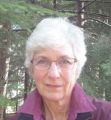LIVING WATER SMART IN BRITISH COLUMBIA: “We have raised expectations that communities can do a better job of managing land and water. But what happens if knowledge, experience and the lessons we are learning are not passed on or are lost?” – a question posed in 2007 by Jay Bradley, Chair of the Vancouver Island Coordinating Team

This edition brings to a close the current season (January through June 2023) of the Waterbucket eNews weekly newsletter series. We celebrate the leadership of individuals and organizations who are guided by the Living Water Smart vision. During the past 5-month period, the Partnership for Water Sustainability has published 20 feature stories. This finale edition constitutes our “season in review”. To refresh reader memories about the topics and how much ground we have covered, we have brought forward the headline plus defining quotable quote from each of the 20 storylines.
LIVING WATER SMART IN BRITISH COLUMBIA: “Now, with the passage of time, we can state the obvious. The Comox Valley experiment is a success. The collaborative spirit has taken root,” stated Derek Richmond, Partnership for Water Sustainability Director and Comox Valley resident

“Everyone cannot do everything. What really stands out about the Comox Valley is that each local government has developed an area of expertise or strength that is provincially significant. The combination is potentially quite powerful in terms of shaping the future of the valley. But only if there is an enduring commitment to walk the talk. Collaboration helps everyone better deliver on policy goals and outcomes. But one has to believe, truly believe, in collaboration to make it so. It must be embedded in an organization’s culture. There is no other way. It must be a commitment, a guiding principle,” stated Derek Richmond.
LIVING WATER SMART IN BRITISH COLUMBIA: “It is obvious that the rural constituencies want to have a voice. And one of the ways we may end up doing that is by creating a Rural Mayors, Chairs and Chiefs Caucus. That is one aspect of what the conversation will be about,” stated Barry Janyk, Executive Director of the BC Rural Centre

“There is NO organization out there that is actually undertaking the work that the BC Rural Centre is doing. None. What organization serves only local governments, community leaders and First Nations? We see the role being created. And it has to be inclusive of everybody that considers themselves a rural or remote community! It is important to listen and become educated in the issues. That really is crucial. Rural areas want to be heard and the BC Rural Centre is an organization that listens. And that is important. How we can enact their issues and concerns into good provincial policy is a good question,” stated Barry Janyk.
LIVING WATER SMART IN BRITISH COLUMBIA: “The Official Community Plan is part of our journey. It is a picture of the future. We used the branding of a compass because we are using this idea to chart our change and course correct,” stated Nancy Gothard, Manager of Community and Sustainability Planning with the City of Courtenay

“The City’s Official Community Plan is something that I have poured my life into over the past two years. It is very progressive. We intend to apply for an award for it. Climate, reconciliation, equity, and community wellbeing are the cardinal directions of it. Running through that, naturally, is a respect for the natural environment. The OCP is my passion. It is written a little differently than the average one. It is explicitly written to be colourful, with images and language to help the lay reader. Because we know the long game with these messages is everyday people,” stated Nancy Gothard.
LIVING WATER SMART IN BRITISH COLUMBIA: “We are trying to envision a program where we acknowledge that we are part of fish habitat. We are part of the water cycle. This allows us to really look at our place on the water pollution file,” stated Dr. Peter Ross of the Raincoast Conservation Foundation

“Right now, I find myself trying to simplify the pollution file because the world has become so complicated. We have a staggering half million chemicals on the high-volume production marketplace. When I as a scientist who has been practicing for decades try to understand what the consequences are for fish or fish habitat or whales or people, I realize that I have my work cut out for me. Instead of trying to capture the science and understanding of half a million chemicals, I am now saying: water as a focal point is very simple,” stated Peter Ross.
LIVING WATER SMART IN BRITISH COLUMBIA: “In the integrating matrix, I set out to capture three ‘states of play’ as row headings: naturally functioning, degraded through lack of awareness, and going forward with science-based understanding,’ stated the late Erik Karlsen (1945-2020) when he presented a path forward to tackle the Riparian Deficit

Circa 2000, legendary civil servant Erik Karlsen had the lead role in developing the language that operationalized British Columbia’s Streamside Protection Regulation. In 2015, his last contribution before his health declined and he passed was creation of a matrix to explain how to integrate two foundational concepts that provide a path forward for designing with nature restore a desired watershed and stream condition.. These are Daniel Pauly’s “Shifting Baseline Syndrome” (1995) and Richard Horner and Chris May’s “Road Map for Protecting Stream System Integrity” (1996).
LIVING WATER SMART IN BRITISH COLUMBIA: Peter Law has put his time and energy into Shelly Creek, as do many other stream stewards in their watersheds around BC, such that Shelly Creek has become a “living laboratory” for the local Parksville community to enjoy.

Peter Law’s experience informs his science-based approach to developing solutions. “The folks responsible for land development need to understand the risks and consequences associated with loss of riparian integrity. So protect it! Do what Parksville did with the enhanced riparian area for Shelly Creek Park. Look beyond the stream channel. Understand hydrology and how water reaches a stream. Municipalities simply must make a concerted effort to maintain the seasonal water balance if neighbourhoods are to sustain these wild populations of fish that are in their back yards,” stated Peter Law.
BC’s PATH TO FOOD SECURITY IS THRU WATER SECURITY: “When we think of all the changes in thinking that we have gone through in the last 50 years, the Land Commission Act really is a testament to the incredible foresight demonstrated in 1973,” stated Joan Sawicki, former MLA

“At a time when most other jurisdictions continue to lose their food lands, BC’s ALR remains the most successful agricultural land preservation program in North America. With food security now becoming a top-of-mind public issue, thanks to the foresight demonstrated in 1973 we still have “the land” – and I submit we would not still have the option for viable agricultural sectors in high growth areas like the Lower Mainland or the Okanagan without the ALR. The ALR has been doing exactly what it was designed to do,” stated Joan Sawicki.
LIVING WATER SMART IN BRITISH COLUMBIA: “We would have to increase irrigated land area by 50% to attain food security in British Columbia. The Fraser Valley alone could provide 2/3 of the area needed!” stated Ted van der Gulik, President of the Partnership for Water Sustainability in BC

“The 50th anniversary of the ALR is an opportunity for reflection followed by action. The ALR saved the land. Without it, there would be no prospect for food security. Will today’s decision makers rise to the moment and secure the water supply necessary to irrigate the land needed for food security? The Agriculture Water Demand Model is a foundation piece for food security. The model utilizes detailed land use inventories and incorporates a 500 m gridded climate data set – the only one in North America. The model quantifies what we have versus what we need with respect to land and water,” stated Ted van der Gulik.
LIVING WATER SMART IN BRITISH COLUMBIA: “I had an epiphany. What if we capture the rainwater and put it in a cavity under the green roof, and then feed the green roof?” stated Harvy Takhar, Utilities Engineer with the City of Delta

In his quest to make a difference in the local government setting, Harvy Takhar has advanced the state of the art for green roof design. He looked through the water balance lens to conceive and demonstrate what he describes as the connected blue-green roof concept. In a nutshell, Harvy had an epiphany when he recognized there was a gap in green roof engineering. “The idea was to harvest the benefits of green roofs, So we added a water cavity that will feed the green roof portion with capillary irrigation, and it can draw water when it needs it,” stated Harvy Takhar.

